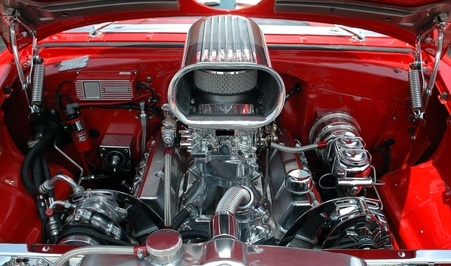
Engine power is proportional to the amount of fuel and air flowing into the cylinders. To increase the efficiency and power of a vehicle, a turbocharger system can be installed. This system works by pushing more air into the cylinders to increase the efficiency and power of a vehicle. The additional air in the cylinders allows more fuel to be added to increase the vehicle's speed. Although a turbocharger system can be purchased and installed, it can be more cost-efficient to build your own.
Perform some research to determine the type of turbocharger best suited for the vehicle. Research other vehicles with similar engines to establish which turbocharger system will be best for your car.
Purchase the turbocharger that you have decided on, with the appropriate turbo mounting flange and bracket that works with the turbocharger.
Measure the size of the turbo exhaust outlet and turbo compressor outlet. Purchase tubing that is the same size as the turbo exhaust outlet and additional tubing of equal size to the turbo compressor outlet.
Use the mounting flange and bracket to attach the turbo to the engine. The turbocharger should be placed with the compressor outlet facing the intake manifold, as well as positioned close to the exhaust manifold.
Place one of the ends of the exhaust tubing into the exhaust manifold's outlet and the opposite end into the mounting flange. Weld both ends of the tubing to the outlet and flange to secure the connections.
Use the exhaust pipe sized to the compressor outlet to connect the compressor outlet to the intake manifold.
Secure the exhaust pipe with silicone tubing connectors.
Join one end of the turbo oil feed to the turbocharger's oil-in line. Attach the unoccupied end of the oil feed to the car engine's high-pressure oil fitting.
Attach the turbocharger's oil drain line to the car engine's oil pan. You can install a receiver plug on top of the oil pan or attach the line directly to the oil pan.
Tune the vehicle's engine fuel curve to the specifications on the turbocharger. Depending on the situation, you may have to install a mechanical fuel enrichment system to aid in controlling the engine.